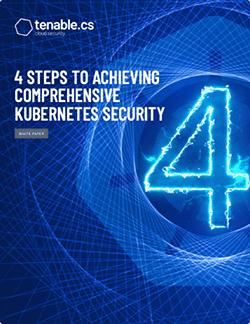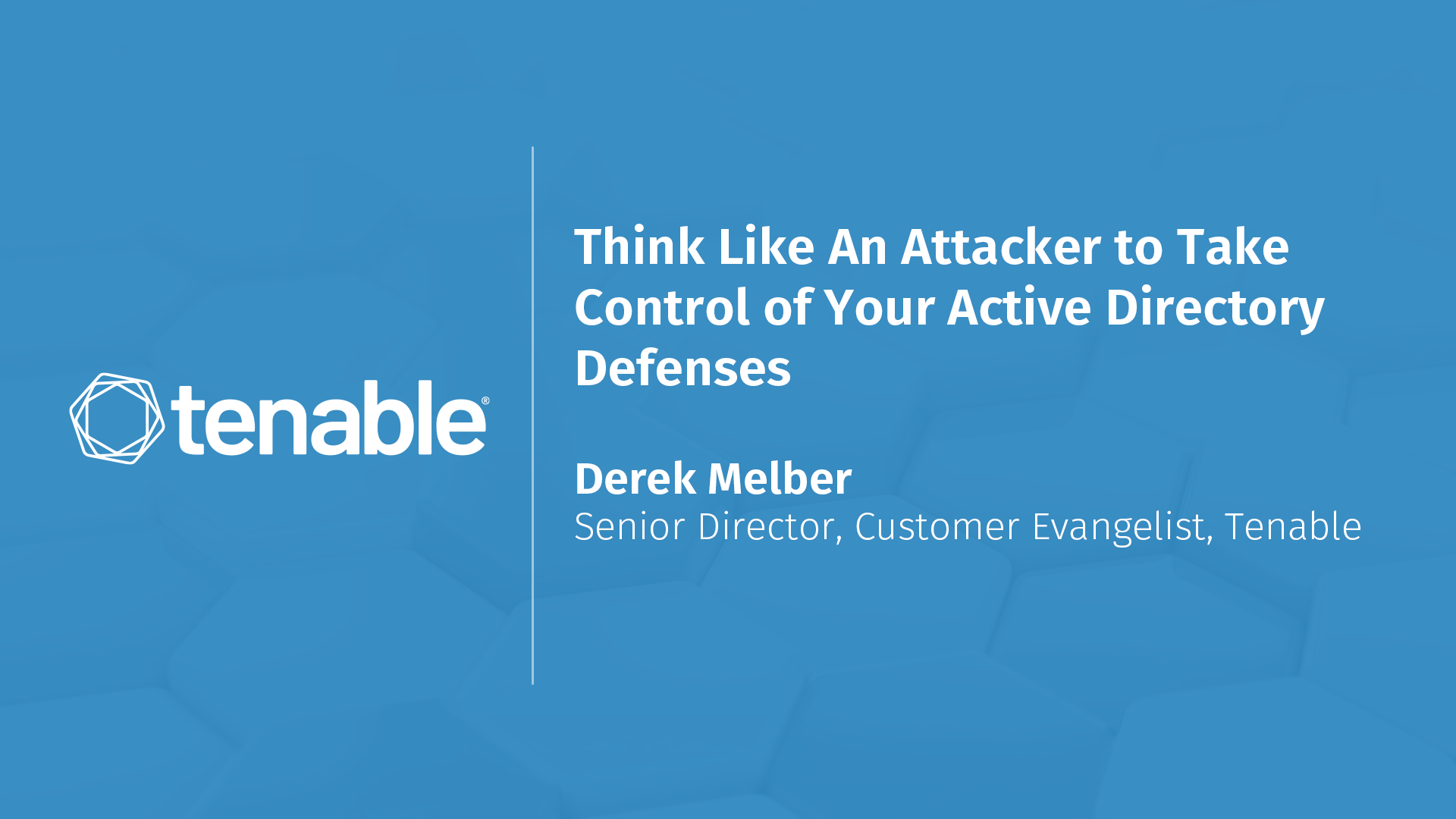Understanding Attack Path Management: The Fundamentals
Is APM Part of Your Overall Cybersecurity Strategy?
Attack path management (APM) is a process your organization can use to get insight into your security weaknesses as seen through the eyes of an attacker. By understanding potential attack paths within your enterprise, you can build stronger security defenses that enable your teams to quickly cut off these attack pathways and shut down attacks before threat actors move deeper into your systems and network. These attack pathways may exist within on-prem assets and systems, as well as within your cloud environment.
In this knowledge base about attack path management, we take a closer look at what APM is all about, how it can help mature your overall cybersecurity practices, and what you can do to have more comprehensive insight into your vulnerabilities and security weaknesses on an ongoing basis.

Here are few highlights of what you’ll discover:
Know Your Attack Paths to Bolster Your Defenses
Organizations of all sizes are susceptible to a cyber-attack Knowing your attack paths can help you stop an attack in its tracks.
Learn MoreUnderstanding Attack Path Management
To be better prepared to tackle cyber risks head-on, it helps to think like an attacker.
Learn MoreAttack Path Management FAQ
Have questions about attack path management? Check out these frequently asked questions.
Learn MoreTenable Connect community for APM
Tenable Connect is a great place to learn more about attack path management.
Learn MoreDiscover Your Attack Paths Before Threat Actors Take Advantage of Them
With Tenable One, your organization can more effectively anticipate likely attack paths across all of your assets, both on-prem and in the cloud, so you can proactively reduce your cyber risk and make better business decisions based on known asset, vulnerability and threat data.
7 Habits Of Highly Effective DevSecOps Teams
While your security team may understand its responsibility for ensuring security for all of your assets—both on-prem and in the cloud—team members may still face unnecessary obstacles that emerge when a siloed approach between security and development teams exists within your organization.
As your attack surface continues to expand and the threat landscape evolves, it’s now more critical than ever to break down the walls that have historically existed between DevSecOps teams. By doing so, you can help build a security-first culture within your organization, one that unites development, runtime and security strategy so you can build a more effective risk-based vulnerability management program, regardless of how rapidly your environment scales and evolves, especially within the cloud.
In this white paper, learn more about how your teams can more effectively address technical, cultural and organizational changes to ensure you’re ready to manage cloud security and operational risks across your organization.
4 Steps to Achieving Comprehensive Kubernetes Security
A growing number of organizations are realizing the benefits of Kubernetes, which helps them decrease some manual monitoring and tuning and ultimately ensures your runtime environment matches your desired configuration.
However, along with those benefits, teams that rely on Kubernetes also face unique security risks that can often be overlooked, especially if your organization still approaches cybersecurity from a legacy vulnerability management perspective.
Today’s dev environments call for a more well-rounded security approach, which includes having a solid understanding of all of your potential attack paths. This white paper offers insight into some of the ways your teams can better secure Kubernetes systems and offers insight into practical best practices from both proactive and reactive security positions.
Frequently Asked Questions About Attack Path Management
Are you seeking more insight into attack path management? Do you have questions about attack path management but not sure where to start? This FAQ is a great place to begin:
What is a cyber-attack?
What is an attack path?
An attack path is a path a malicious actor may take after exploiting a vulnerability or weakness within your attack surface. The attack path is a visual representation of possible paths an attacker could take to compromise an asset from any entry point. For example, once an attacker gains entry into your network, the attack path enables movement between assets. It’s important for your security teams to understand all of the potential attack paths within your organization so they’re better prepared to stop an attack should a breach occur and prevent further movement throughout your network.
As part of an attack, a threat actor leverages different tools and techniques to accomplish objectives. For example, an exploit allows an attacker to gain an initial foothold over your network and then maintains access over an asset (persistence), elevates privileges and laterally moves between network devices (lateral movement). Finally, the attacker attempts to complete an objective, for example, a denial of service (DoS) of critical infrastructure, exfiltration of sensitive information or distraction of existing services. This is known as an attack path. An attack path contains one or more attack techniques and allows an attacker to accomplish his objective.
What is attack path blast radius?
What is attack path management?
How does attack path management work?
What is attack path mapping?
What are some common attack paths?
What are some benefits of attack path management?
What is Active Directory (AD)?
Why is it important to secure your Active Directory?
Are attack paths and attack vectors the same?
What is attack path analysis?
What is attack surface management?
Tenable Connect community: Your Go-To Resource for Attack Path Information
Do you have questions about attack path management? Would you like to connect with other APM security professionals? Tenable Connect is a great place to learn more about attack path management, including insight into industry best practices and practical tips you can employ today.
Identifying the Weakest Links in Cyber Kill Chains
In today’s security environment, with highly motivated cyber attackers employing increasingly sophisticated techniques to break through commonly deployed defenses, just one skillful intruder can infiltrate your systems with one carefully crafted attack path to a relatively unimportant asset.
Read MoreExternal ASV Scan Clarification
Our company has many public IP address ranges. My question is, do we have to scan all external IPs? Essentially everything is outside of the CDE and in the DMZ. So there is a firewall protecting the CDE from these externally facing devices. Does this then mean we only have to scan the filtering devices (e.g. firewalls) and really any entry point into the CDE?
Read MoreActive Directory is Now in the Ransomware Crosshairs
A flurry of ransomware operators are now targeting Active Directory (AD) as a core step in the attack path. Understanding the details can help you ensure your AD environment is secure. This blog dives into some of the most recent ransomware tactics leveraging AD to accelerate attacks and provide actions you should take to protect against these threats.
Read MoreKnow Your External Attack Surface (EAS) to Uncover Potential Attack Paths
As your organization deploys more assets, services and applications in the cloud, it can be increasingly challenging for your security teams to know about all of your assets as they spin up, much less have the time to track down security issues and fix them before more tools and services come into play into the cloud. Tenable Attack Surface Management gives your teams the visibility they need by continuously mapping the internet and discovering connections to your internet-facing assets so your teams can assess your entire external attack surface’s security posture and mitigate your cyber risk.
Attack Path Management Blog Bytes

Tenable’s Acquisition Of Cymptom: An “Attack Path-Informed” Approach to Cybersecurity
Tenable continues to expand its service offerings to meet the needs of modern organizations working around the clock to secure their complex and evolving enterprises. With Tenable’s acquisition of Cymptom, organizations now have another powerful security tool in their arsenal—the ability to disrupt attack paths with more insight into traditional choke points that your teams can more effectively mitigate or remediate to reduce cyber risk based on the MITRE ATT&CK framework.

The Path to Zero Trust: Is it Time to Rethink What We're Calling a Vulnerability?
When it comes to the term “vulnerability,” most security experts see it as a flaw or other issue in design or code that creates a potential point of security compromise for an endpoint or network. While that’s certainly true, when thought about in context of a zero trust approach to security, is now the time for practitioners to rethink exactly what we’re calling vulnerabilities, especially as we face increased issues from a growing number of ransomware attacks? The reality is a zero trust journey is less about evaluating technologies and more about strategic thinking.

How State and Local Governments Can Bolster their Cyber Defenses
Organizations of all sizes around the globe are facing increased threats from malicious cyber actors. The issue certainly gained more attention after conflict broke out between Russia and the Ukraine, which prompted U.S. President Biden to encourage government agencies to increase insight into critical infrastructure and their cybersecurity defenses. Likewise, state and local governments should take heed and proactively protect their systems and data from nation-state actors.
Attack Path Management Webinars
Think Like An Attacker to Take Control of Your Active Directory Defenses
Attackers are getting increasingly better at finding and leveraging Active Directory (AD) attack paths. To be better prepared to tackle these risks head-on, it helps to think like an attacker. By understanding how attackers operate, your teams can more effectively secure your Active Directory to better protect your organization. In this webinar, learn more about how attackers identify attack paths, how to assess attack path blast radius, and ways to leverage attack path concepts.
Proactive Address and Manage Attack Paths
With the power of Tenable One, your security teams will have the tools, resources and research they need to discover all of your attack paths and effectively manage all of your organization’s cyber exposure, everywhere, for every asset.

Know Your Exposures
Get insight into your security exposures with a unified global exposure score that pulls from a variety of data resources, enabling you to understand how secure your organization is, how your program currently performs and what that looks like over time.

Disrupt Attack Paths
With attack path visualization, your teams can preemptively focus response on disrupting paths attackers may take, including mapping critical risks to the MITRE ATT&CK framework so you can see all of your attack paths continuously, on-prem and in the cloud.

No More Blind Spots
Make a complete inventory of all of your assets so you can better discover, mitigate, and manage all of their cyber exposures regardless of data source. With a centralized view, your teams can streamline analysis, easily create custom reports, and take effective actions.
Try Tenable One for Free
Get a unified view of your modern attack surface with Tenable One, an exposure management platform that integrates risk-based vulnerability management, web application security, cloud security and identity security, so you can more effectively identify and address attack paths across your enterprise.
- Tenable Cloud Security
- Tenable One


